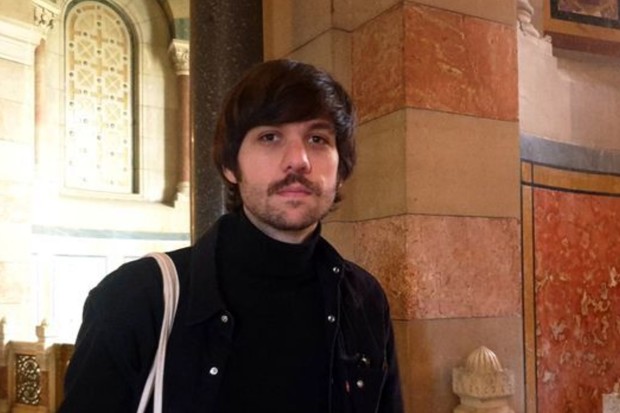LOCARNO 2023 Cineasti del presente
Romain de Saint-Blanquat • Director of Bitten
“Gothic literature had an influence on the aesthetics of the film as well as on the main character”
by Teresa Vena
- The French director breaks down his stylish and atmospheric feature debut, focusing on his protagonists, and his fascination for vampires and coming-of-age topics

French director Romain de Saint-Blanquat has presented his first feature, Bitten [+see also:
film review
trailer
interview: Romain de Saint-Blanquat
film profile], in the Cineasti del presente section of this year's Locarno Film Festival. We talked to him about his protagonists as well as his fascination for vampires and coming-of-age topics.
Cineuropa: Why a vampire story?
Romain de Saint-Blanquat: It's a character I like very much; I have seen a lot of vampire films. It's something I am familiar with. I didn't have this idea from the start, but it quickly cropped up while I was searching for a way to depict the character of Christophe. What moves me very much about the vampire, and I wanted to develop this in the film, is the fact that the vampire doesn't change; he doesn't grow. The character doesn't grow either; he looks much too young for his age, and therefore has difficulties accepting his body and finding his place among other teenagers. This was a way to link this unease to Françoise's fear of dying. It was possible to evoke parallels between the two characters’ emotions.
What fascinates you particularly about the topic of coming of age?
What fascinates me is that these films talk about an ending – the ending of childhood – and everything that goes with it, like fears and anxieties. That can have an intensity that is greater than with adult protagonists. There is a melancholy about something that is about to end. And at the same time, it's also a beginning. What I like a lot in films about adolescence is that when we leave the characters, it stays very open; there is nothing set in stone. Coming-of-age films lend a lot of importance to the feelings and intimacy of the characters, but also to the details, to the rituals and to how they perceive their bodies.
Did you intend to have female protagonists from the start?
It came about very naturally. I wanted female protagonists without even asking myself too many questions about them. I am more interested in female characters in general; I am more touched by the challenges and issues they face. Moreover, I think it was more powerful for the story in a period in history when girls and boys were separated and more segmented. Therefore, a female path seemed more fascinating, in terms of topics like fear of the other and fear of sex.
Can you tell us more about the actresses? How did they prepare for their roles?
The actresses had an important influence on the script. In the screenplay, the personalities of the two girls were more different from each other. But thanks to the work of the actresses, the link between the two characters became more fluid; the personalities were not so strictly defined any more, and each of the girls had certain aspects of the other one in herself. We did a lot of rehearsals, but they each already possessed some elements of the characters, so that part seemed evident to them.
What were the biggest influences on your visual concept for the film?
In the beginning, the influences came in a subconscious way. I put together what I wanted to see. I am aware that the film resonates with a lot of movies that I like and that have formed me as a director. But the idea was to be somewhere between a fantasy film and a coming-of-age flick that focuses on intimacy, therefore recalling the films of the French Nouvelle Vague and the fantasy movies of the 1960s and 1970s. Gothic literature had an influence on the aesthetics of the film as well as on the main character.
Is there anything of you in the protagonists?
Yes, there are parts of me in all of them. I am receptive to the occult, and to certain signs and symbols.
Did you enjoy reading this article? Please subscribe to our newsletter to receive more stories like this directly in your inbox.















